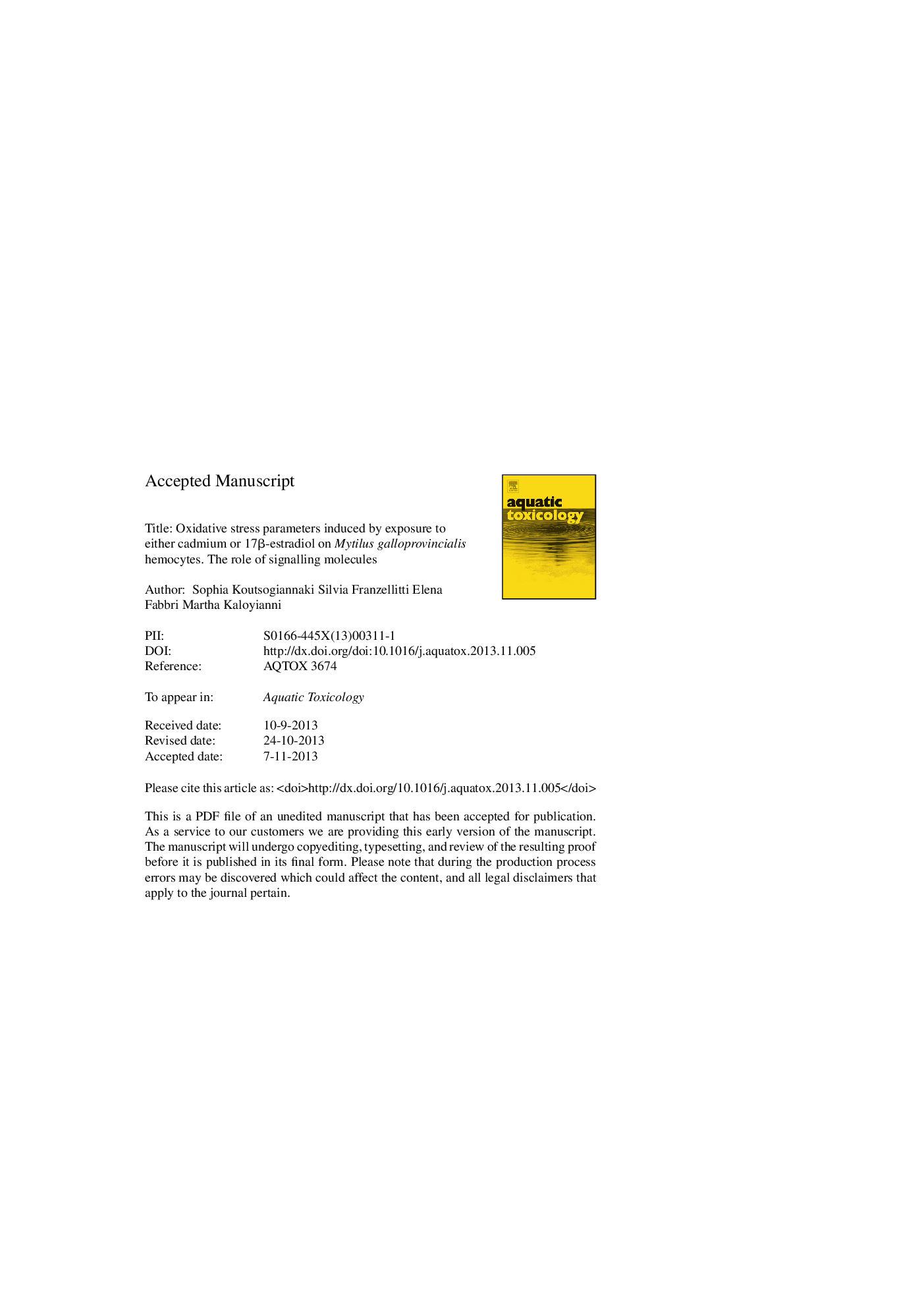| Article ID | Journal | Published Year | Pages | File Type |
|---|---|---|---|---|
| 6382631 | Aquatic Toxicology | 2014 | 42 Pages |
Abstract
Our results suggest that micromolar concentrations of either cadmium or 17β-estradiol affected the redox status of mussels by modulating oxidative parameters and antioxidant enzymes gene expression in mussel M. galloprovincialis hemocytes. In particular, our results showed that treatment of hemocytes with either 5 μM of cadmium chloride or with 25 nM of 17β-estradiol for 30 min caused significant increased ROS production; this led to oxidative damage exemplified by significant increased DNA damage, protein carbonylation and lipid peroxidation, as well as increased mRNA levels of the antioxidant enzymes catalase (CAT), superoxide dismoutase (SOD) and glutathione S-transferase (GST). Furthermore, our results suggest that either cadmium or 17β-estradiol signal is mediated either through one of the already known pathways initiated by photatidyl-inositol 3-kinase (PI3 K) and reaching Na+/H+ exchanger (NHE) probably through protein kinase C (PKC) or a kinase-mediated signaling pathway that involves in most of the cases NHE, PKC, Ca2+-dependent PKC isoforms, PI3-K, NADPH oxidase, nitric oxide (NO) synthase, c-Jun N-terminal kinase (JNK) and cyclic adenosine-3â²-5â²-monophosphate (cAMP). Our results also attribute a protective role to cAMP, since pre-elevated intracellular cAMP levels inhibited the signal induced by each exposure. Finally, since aquatic invertebrates have been the most widely used monitoring organisms for pollution impact evaluation in marine environments and taking under consideration the positive correlation obtained between the studied parameters, we can suggest the simultaneous use of these oxidative stress parameters offering an effective early warning system in biomonitoring of aquatic environments.
Keywords
Related Topics
Life Sciences
Agricultural and Biological Sciences
Aquatic Science
Authors
Sophia Koutsogiannaki, Silvia Franzellitti, Elena Fabbri, Martha Kaloyianni,
